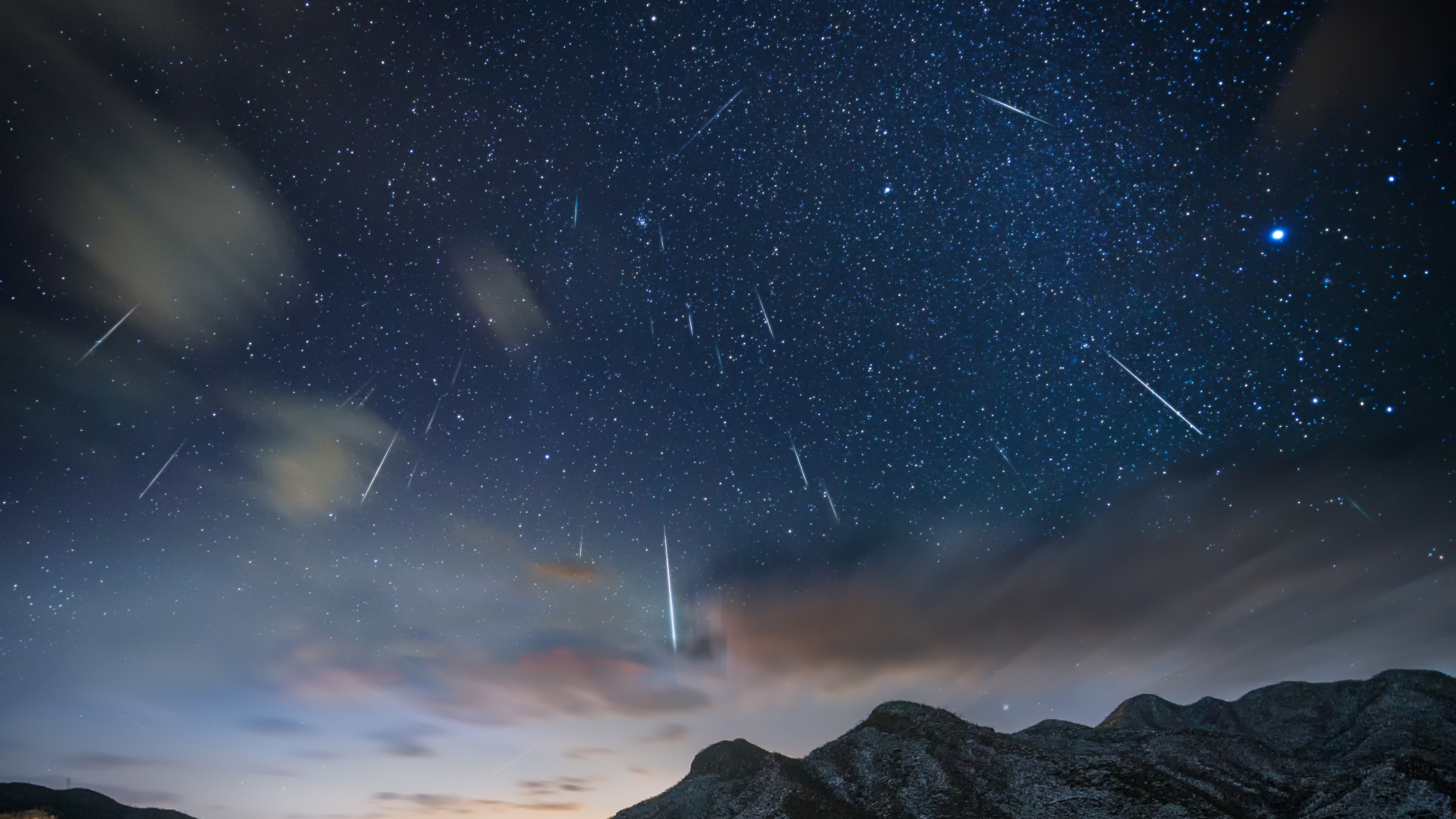NASA Scientists Eye Long-Standing Moon Mysteries in Lunar Return

WASHINGTON — NASA's scientists are thrilled by the prospect of getting back to the moon, where they hope to solve a host of mysteries about Earth, our closest companion and the rest of the solar system.
At the 70th International Astronautical Congress, held here this week, NASA's chief scientist, Jim Green, delivered a keynote speech yesterday (Oct. 21). In it, he laid out some of the primary questions scientists hope to tackle as part of the agency's renewed focus on the moon, in the form of the Artemis program to land humans on the lunar south pole by 2024. Those questions aren't just about the moon, he emphasized; answering those queries would also prepare us for exploring Mars and would shed light on the history of Earth and the rest of the solar system as well.
In a speech punctuated by applause for a Bill Nye-hosted panel on planetary defense next door, Green gamely co-opted the cheers for his own agenda. "Now I want to talk a little bit more about the science that [we can do on the moon]. And I know, they're so excited about it," he quipped over applause. "I can't wait either."
Related: Water Ice Confirmed on the Surface of the Moon for the 1st Time!
Since the accelerated 2024 human-landing timeline was first announced more than six months ago, much of the high-profile explanation for why such an initiative is valuable has come from NASA Administrator Jim Bridenstine. He has nodded toward scientific questions but has focused details on exploration-related topics, like understanding where water ice is buried in dark crater floors near the poles. (That ice can be mined and processed into life support for astronauts and fuel for leaving the moon, the thinking goes.)
Green ran through a much more comprehensive program of science that can be done as part of the Artemis missions. He also touched on the importance of the agency's strategy of partnering with commercial companies and on the value of the Gateway, a planned way station in orbit around the moon.
Both of those facets of NASA's moon approach will give agency scientists access to a much broader swath of the lunar surface. That's valuable even if that access comes exclusively via robotic explorers and sample collectors, while humans focus on the south pole.
Breaking space news, the latest updates on rocket launches, skywatching events and more!
Scientists have used moon rocks brought back by the Apollo missions to create a timeline of impacts over the course of the solar system's history. Records of that history have been lost on Earth, erased by plate tectonics, erosion and other constant changes to Earth's crust. The moon is a time capsule for these impacts that can be applied here and on moons and bodies across the solar system — but Apollo's coverage left a key gap that scientists need to fill.
Filling that timeline gap has been on scientists' priority list for a long time. Studying lunar impacts could also tell scientists when certain materials — particularly water and potentially other building blocks of life — arrived on Earth. The bombardment history "could be a real key in trying to understand how that spark of life started," Green said. "That information is indeed on the lunar surface."
Other science questions Green mentioned are a testament to how much we've learned since the Apollo era last saw sustained NASA investigations on the moon. For example, Green said, the Apollo program placed seismometers on the lunar surface to investigate the moon's internal dynamics. But the data were challenging to understand.
"The crust rings. It's been broken out over billions of years, and as seismic things occur, that ringing has really confused the seismic observations," Green said. "Now that we know that, we can build better seismometers, go back to the moon and really tease out much more information about the crust."
Studying the moon could even teach us about the sun, Green said. During the new-moon phase, when the side of the moon that faces us is dark, the far side of the moon is fully lit — and fully exposed to the solar wind that constantly streams off the sun. Because the moon is unprotected from the effects of that solar wind, its record is etched into the lunar surface, waiting for scientists to parse it. "The solar wind the sun has emitted over that period of time is buried in the regolith and in the soil on the far side of the moon," Green said.
Revisiting the moon could also offer scientists a glimpse of an ephemeral period of the moon's history, Green said. When the moon was dotted with volcanoes, eruptions let gases escape from the rock and migrate to the coldest areas in the planet, over the poles. There, they refroze and potentially snowed down onto the lunar surface. Scientists believe, Green said, that pulling cores from crater floors in these regions, where such snows may never have melted again, should let researchers trace back the history of these snowfalls.
- It's 2019. Why Haven't Humans Gone Back to the Moon Since the Apollo Missions?
- From Apollo to Artemis — How Astronaut Food May Change When We Return to the Moon
- How to Make Moon Water: Add Solar Wind, Tiny Meteorites, and Then Heat
Email Meghan Bartels at mbartels@space.com or follow her @meghanbartels. Follow us on Twitter @Spacedotcom and on Facebook.

Meghan is a senior writer at Space.com and has more than five years' experience as a science journalist based in New York City. She joined Space.com in July 2018, with previous writing published in outlets including Newsweek and Audubon. Meghan earned an MA in science journalism from New York University and a BA in classics from Georgetown University, and in her free time she enjoys reading and visiting museums. Follow her on Twitter at @meghanbartels.
